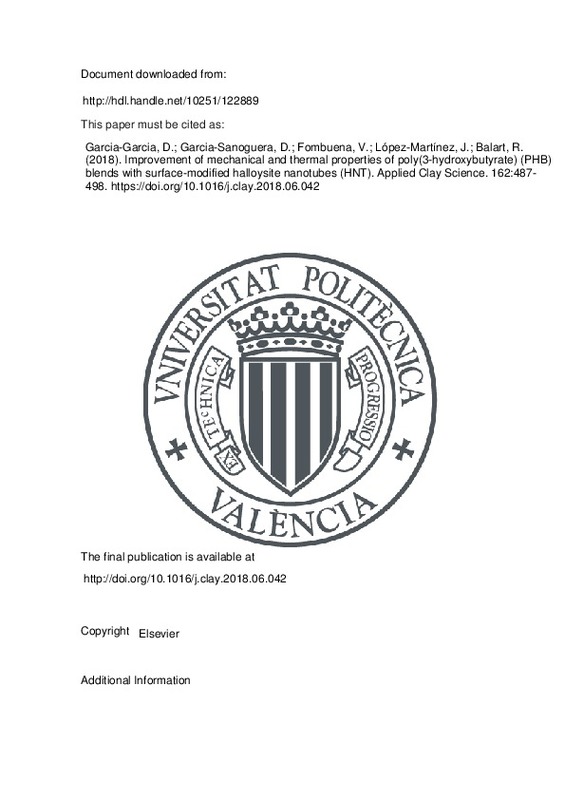JavaScript is disabled for your browser. Some features of this site may not work without it.
Buscar en RiuNet
Listar
Mi cuenta
Estadísticas
Ayuda RiuNet
Admin. UPV
Improvement of mechanical and thermal properties of poly(3-hydroxybutyrate) (PHB) blends with surface-modified halloysite nanotubes (HNT)
Mostrar el registro completo del ítem
Garcia-Garcia, D.; Garcia-Sanoguera, D.; Fombuena, V.; López-Martínez, J.; Balart, R. (2018). Improvement of mechanical and thermal properties of poly(3-hydroxybutyrate) (PHB) blends with surface-modified halloysite nanotubes (HNT). Applied Clay Science. 162:487-498. https://doi.org/10.1016/j.clay.2018.06.042
Por favor, use este identificador para citar o enlazar este ítem: http://hdl.handle.net/10251/122889
Ficheros en el ítem
Metadatos del ítem
| Título: | Improvement of mechanical and thermal properties of poly(3-hydroxybutyrate) (PHB) blends with surface-modified halloysite nanotubes (HNT) | |
| Autor: | ||
| Entidad UPV: |
|
|
| Fecha difusión: |
|
|
| Resumen: |
[EN] The effect of two hydrophobic treatments on the hydrophilic nature of halloysite nanotubes (HNT) was studied in this research work: a silanization with (3-glycidyloxypropyl) trimethoxysilane (GLYMO) and a surface ...[+]
|
|
| Palabras clave: |
|
|
| Derechos de uso: | Reconocimiento - No comercial - Sin obra derivada (by-nc-nd) | |
| Fuente: |
|
|
| DOI: |
|
|
| Editorial: |
|
|
| Versión del editor: | http://doi.org/10.1016/j.clay.2018.06.042 | |
| Código del Proyecto: |
|
|
| Agradecimientos: |
This work was supported by the Ministry of Economy and Competitiveness (MINECO) [MAT2017-84909-C2-2-R]. D. Garcia-Garcia wants to thank the Spanish Ministry of Education, Culture and Sports for the financial support through ...[+]
|
|
| Tipo: |
|







![[Cerrado]](/themes/UPV/images/candado.png)


